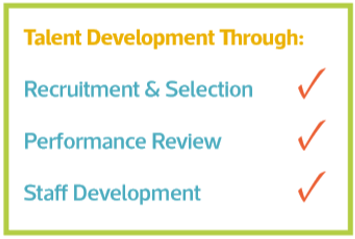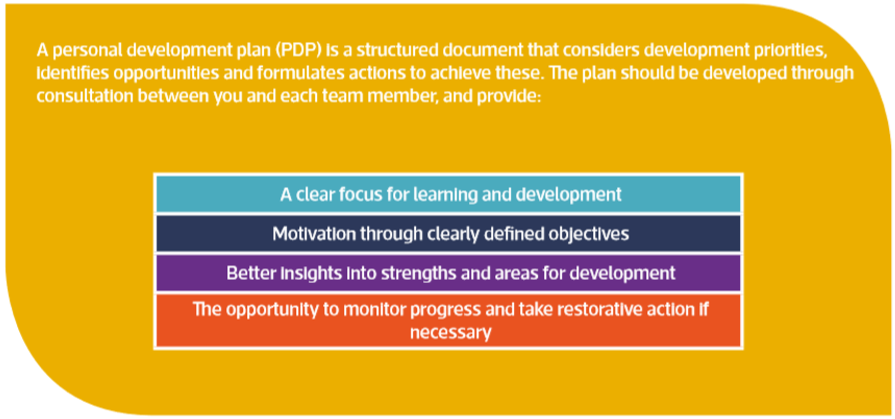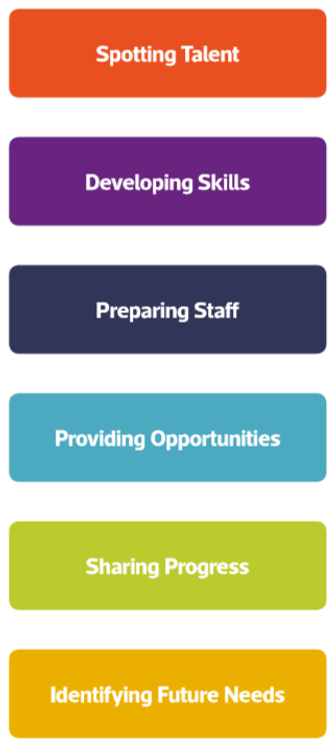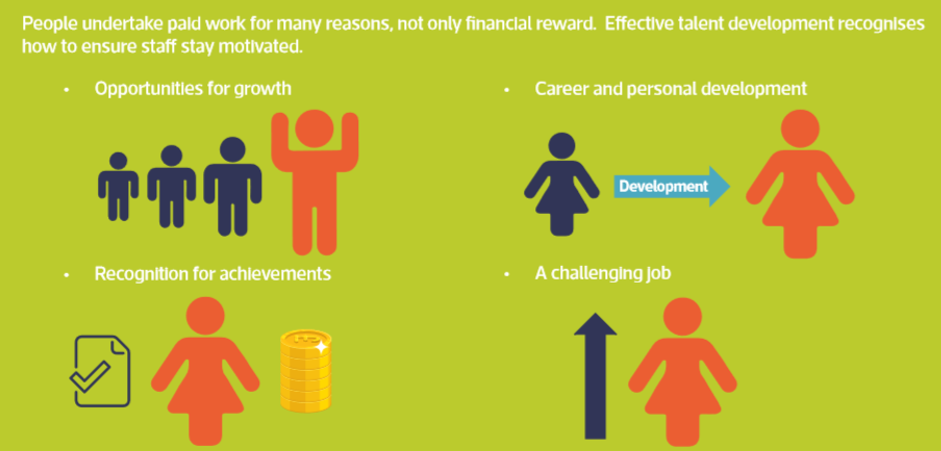
Talent management seeks to attract, identify, develop, engage, retain and deploy individuals who are considered particularly valuable to an organisation (CIPD, 2017).
Why is development important for all?
Provide all team members with development opportunities, in order to:
- Make use of the full abilities of employees and develop expertise.
- Develop new skills, knowledge and abilities.
- Build self-esteem, promote engagement and increase motivation.
- Boost creativity, develop more effective processes and efficient ways of working.
- Support the achievement of organisational aims and objectives.
- Support individuals’ career aspirations.
- Identify appropriate training (such as formal training courses, on-the-job training, delegation of new or extended responsibilities, mentoring, coaching, shadowing and secondment).
- Improve employee retention.
Remember that some members of your team may not have aspirations for development. However, the pace of change, not least in technology, means everyone needs to learn. As a manager it is your job to make sure that each employee understands why they need to undertake particular development activities and that they are supported to do so, particularly where they find this challenging or are resistant to engaging with development opportunities.
Linking development to the appraisal system and creating targeted personal development plans, with clearly defined actions and deadlines for achievement can ensure everyone receives the support that they need.


Succession Planning
Succession planning ensures that there are never gaps in filling key roles and that staff are recruited and developed in readiness to fulfil these roles when they arise. An effective strategy is also motivating team members, encouraging them to engage with staff development activities.
Succession planning focuses on:
- Spotting talent by evaluating the performance of existing employees and applying effective selection methods when recruiting new people.
- Developing skills, knowledge and ability through personal development planning and targeted training.
- Preparing employees for new challenges with stretched goals and involvement in specific projects.
- Providing opportunities for cross-department working, work-shadowing, mentoring, transfer between roles and promotion.
- Sharing the progress of employees who engage with talent development initiatives, so that there is an awareness of individuals who may be able to fulfil key roles across the organisation.
- Identifying likely future needs to fill key roles, emerging from previous trends or predicable factors such as the forthcoming retirement of key people.
Whilst your organisation may not have people ready to take on every role in the organisation, having an effective succession plan enables existing employees to cover key roles, even on a temporary basis, ensuring that the most important responsibilities can be fulfilled until a more permanent solution is found.


References
Cameron, S (2009). The business student’s handbook: skills for study and employment Pearson.
Chamorro-Premuzic, T., & and Jonathan Kirschner, J. (2020). How the Best Managers Identify and Develop Talent How the Best Managers Identify and Develop Talent (hbr.org)
Heathfield, S (2017) Succession Planning. The Balance www.thebalance.com/succession-planning-1918267
Personnel Today (2004). Talent Spotting www.personneltoday.com/hr/talent-spotting
How do you develop talent? Test yourself with our Scorecard.
If you’re a member, you can test yourself on Developing Talent and see if you meet the standard.
Spotlights
Further Resources
From the blog









